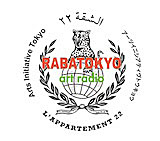アクティヴィスト作品をどう活性化させるべきか? 「アクティヴィズムとしての写真表現 - ザネレ・ムホリを紐解く」レビュー
English Follows;
アクティヴィスト作品をどう活性化させるべきか?
「アクティヴィズムとしての写真表現 - ザネレ・ムホリを紐解く」を聴講して
ネトルトン・タロウ(テンプル大学ジャパンキャンパス上級准教授)
去ること2/13(土)に私はテート・モダン インターナショナル・アート部門 シニア・キュレーター(写真担当)中森 康文氏を招いて開催されたAIT主催のウェビナー「アクティヴィズムとしての写真表現 − ザネレ・ムホリを紐解く」を聴講した。(閉鎖中のテート・モダンでは、現在開催のムホリの個展も閉鎖中であるが5月17日に同館再オープンと共に一般公開とのこと。)ムホリは、英語圏では近年様々なメディアで紹介されている著名なヴィジュアル・アクティヴィストである。自身を含む南アフリカの黒人LGBTQIA+コミュニティーの存在を主張し、黒人LGBTQIA+の人たちの表象を増やし・多様化するためにドキュメンタリーやポートレート写真を作っている。クィアな黒人の生活を可視化するため、写真の基本的な「記録装置」としての役割を持った作品群であり、ムホリ自身、「[私にとって]最も重要なのはコンテンツです。誰が写っていて、なぜその人物がそこにいるか」であると説明している。
ムホリは自分のことを「アーティスト」ではなく、「アクティヴィスト」とするが、それはアートが一手段にすぎないという意味だろう。そう捉えた場合、この作品群を観るにあたって重視されるべきなのは、aesthetics(美学)ではなく、ethics(倫理)だと思うので、ここでは作品の様式的な評価は割愛させてもらうが、前提として、様式的評価なしにテート・モダンのような権威をもつ美術館に入ることは許されないとだけ書いておきたい。そして運動性を重視した作品も、とかく美術館という制度の中では審美化されてしまうことを、今回のウェビナーで改めて認識した。無論このような美術史的なフレーミングがあってこそ、ムホリのアクティヴィズムが美術館へ参入できるのであり、アクティヴィストの作品が展示されることはとても良いことだ。おそらく美術館の制度的背景もあり、シニア・キューレーターの中森氏は、南アフリカに於ける黒人LGBTQIA+コミュニティーの事情やムホリの背景をとても分かりやすく説明しながら、写真の参加者のポージングに見て取れる「コントラポスト」やセルフ・ポートレートのシリーズの中で使われている小道具のシンボリズムを紐解くという、美術史的な説明をすすめ、また、本展覧会がもたらす効果としては、これまでの美術史と美術館の在り方自体の多様化が挙げられる、と言及した。
作家の意図をパフォーマティヴに伝えるためには、もう少し画期的な紹介方法が必要だったかもしれない。ウェビナーの形態も、パネリストのみをスクリーンに映し、参加者を受動的な、表象されない観者とし、ムホリが求めるアクティヴィズムとは遠く離れていた。ムホリは未来に向け、[作品と運動を通して]「どんな空間でも形成できる」と語っているが、今回のウェビナーは古典的な空間へのとどまりを感じた。アクティヴィティーを継続するためには、鑑賞ではなく、観者を突き動かす紹介の仕方が適当であったはずだ。
なぜ南アフリカの黒人LGBTQIA+の人たちのポジティヴな表象を増やす必要があるのか?それはイメージの問題だけではなく、中森氏の説明にもあった通り、 南アフリカでは黒人のレズビアンやトランスジェンダーの人たちが日常的に迫害・抹殺されているからである。この写真はつまり、存在を否定されてきた人たちを記録し、その記録を通して、その人たちを、今までその人たちを削除・拒否してきた公共空間に運び込む実践である。これらの「公共空間」は、人種隔離政策があった南アフリカでは排他的であった。 作品展示を通して、ムホリは歴史的に黒人クィア・フォビック(黒人クィアの人々に対して嫌悪/恐怖心を示す)だった空間を変換させようとしているのだが、歴史的にクィア・フォビックや人種差別的だった空間はもちろん南アフリカだけではなく、英国にも日本にも存在する。この作品は、黒人LGBTQIA+の観者たちに、黒人LGBTQIA+の参加者(ムホリは「被写体」とは呼ばない)のポジティヴな表象を体験する機会を与えることによって、自分もコミュニティーの一員である認識と、コミュニティー創作の可能性を示唆する装置でもある。よって、ムホリの作品は黒人LGBTQIA+のコミュニティーを「反映」するだけでなく、「生産」することに重点を置いている。
ムホリの実践において、当事者と行為主体性は極めて重要な概念である。その意図を汲み取るのであれば、黒人、レズビアン、トランスジェンダーなパネリストがいても良かったと思うし(実際にはシスジェンダーのアジア人男性とアジア人と白人のミックスの男性、シスジェンダーのアジア人女性二人)、この文章を書くのも自分より適した人がいるはずだと思ってしまう(著者はシスジェンダー、アジア人と白人のミックス男性)。ジョン・バージャーが『イメージ-視覚とメディア』で指摘しているように、作品を美術史的な様式重視の文脈に落とし込むことによって、本来参加者であるはずの観者から遠のかせてしまうことがある。特に運動として捉えられるべきムホリの作品について考えるとき、私たちは作品中の政治的背景を理解しながら、更にそれらが示唆する一連の問題が、私たちにも身近であることを検討するべきだろう。ムホリの作品が題材としている問題は南アフリカの課題でもあるが、グローバルな課題でもある。例えばロンドンでは、2020年10月までの一年間に3,111件の性的指向に基づいたヘイトクライム(*1)があった。アメリカでも黒人のトランスジェンダーの人たちが日常的に殺されている。
では日本ではどうなのか?ヘイトクライムはあるのか?日本の主流のメディアや美術館にレズビアンや黒人やトランスジェンダーの人々の多様な表象はあるのか?運動としての作品は観者の活性化を狙うはずであり、参加者から求めるべき反応は「これから自分に何ができるだろう?」という未来に向けた探求心だと思う。「日常性への接近」は前衛美術のテーマとして捉われがちだが、アクティヴィスト・アートにも不可欠だ。アート作品と観者の日常生活の関連性を問うて、初めてクィア・フォビックな空間を変えることができるのではないだろうか。
ネトルトン・タロウ テンプル大学ジャパンキャンパス 上級准教授 美術史 専門分野は現代美術、視覚文化研究。
*1 参照元:https://www.bbc.com/news/uk-england-london-51049336
How to Activate Activist Work?
Thoughts on the "Photographic Expression as Activism: Reading Zanele Muholi" Webinar
Taro Nettleton (Associate Professor, Temple University Japan Campus)
On February 13 (Sat), I was invited to listen to the AIT-organized webinar titled "Photographic Expression as Activism: Reading Zanele Muholi", given by Nakamori Yasufumi, Senior Curator, Photography Department, International Art, Tate Modern. While Tate Modern is currently closed, a solo exhibition of Muholi's work is on there until the end of May. Muholi is a renowned visual activist whose practice has been featured in numerous English-language media outlets in recent years. Their work documents, through photography and video, members, including themselves, of the LGBTQIA+ community in South Africa. The work employs photographic media as a recording device to visualize queer Black life. As Muholi has explained, what is most important to them is "content. Who's in the picture and why they're there."
Crucially, Muholi categorizes themselves as an activist rather than artist, which I understand to mean that art is but one mean to a greater end. What needs to be underscored in thinking about their work, then, is ethics rather than aesthetics. As such, I won't evaluate the work formally here, but let me note that a formal evaluation is a necessary cost of admission into an authoritative institution such as the Tate Modern. There's also a tendency for art institutions, especially museums, to aestheticize political work. Of course, it is only with art historical framing that Muholi's and other activists' works could enter the museum, and it's a very good thing to see activist work exhibited in such institutional settings. Due presumably to his professional background, Mr. Nakamori also advanced an art historical reading of Muholi's practice, pointing to the sociopolitical context of their work with reference to LGBTQIA+ community in South Africa, but also the contrapposto of Muholi's participants (they do not use the word "subjects") and an iconographic reading of the props used in Muholi's self-portraits. In regards to the effect of the exhibition also, he first referred to the diversification of art history and the Tate.
To accurately and performatively convey Muholi's activist intent, a more open and radical introduction to their work may have been necessary. The format of the webinar, which only showed the faces of the speakers, also situated participants as anonymous and passive viewers, a far cry from Muholi's activism and participants. Looking to the future, Muholi argues that any kind of space can be made through artwork and activism. Unfortunately, the webinar felt stuck in a classical space. To carry the activity of Muholi's artworks, the webinar should have promoted action, rather than contemplation.
Why is it necessary to create positive representations of South Africa's Black LGBTQIA+ folks? The answer is about more than images. As Mr. Nakamori very informatively explained, the representations are a response to the routine violence and murder, i.e. erasure, of Black lesbians and trans folk in South Africa. Muholi's photographs, in other words, document a people whose very existence has been historically denied. The photographic records then effectively bring their participants into the "public" spaces from which they were historically excluded. By exhibiting the works, Muholi aims to transform historically queer-phobic spaces. Queer-phobia and exclusiveness in so-called public spaces also, of course, exists in the UK and Japan as well as South Africa. This body of work not only reflects the Black LGBTQIA+ community, but produces it, by giving Black LGBTQIA+ folks a chance to experience positive representations of Black LGBTQIA+ folk and provide affirmation and joy. It also provides hope by modeling community formation.
Subjectivity and agency are essential concepts in Muholi's practice. With respect to their intent and work, there probably should have been Black, lesbian, and/or trans panelists at the webinar (there was one cis-gendered Asian man, one cis-gendered White/Asian man, and two cis-gendered Asian women) and there probably was someone more suited to writing this text (the author is a cis-gendered White/Asian mix man). As John Berger writes in Ways of Seeing (1972), emphasizing the formal qualities and art historical contexts of a work can mystify it away from would-be participants. Particularly when we consider Muholi's activist work, we need to understand the sociohistorical and political context of the work and take into account that the issues addressed are the work are also ours. While respecting the specificity of the problems they address, we need to see that the problems are also global ones. For example, in the one-year period up to October 2020, there were 3,111 cases of hate crimes based on sexuality committed in London(*1). Trans people also continue to be murdered routinely in the U.S.
And what about Japan? Do we have hate crimes? Do Black, lesbian, and trans folk enjoy diverse representation in the media here? And in museums? Activist work aims to mobilize viewers into participants. The blurring of art and life is not just an avant-garde concept. The ideal response from webinar attendees would thus have been, "What can I do for the future?" It's only through a serious consideration of the relation between art and the everyday lives of viewers that queer-phobic spaces can be transformed.
Taro Nettleton is Associate Professor of Art History at Temple University, Japan Campus, where he teaches courses on contemporary art, visual culture, and theory.
*1: https://www.bbc.com/news/uk-england-london-51049336
2021-3-22












![[購読申込]](../../../img/subscribe.gif)
![[購読解除]](../../../img/unsubscribe.gif)


